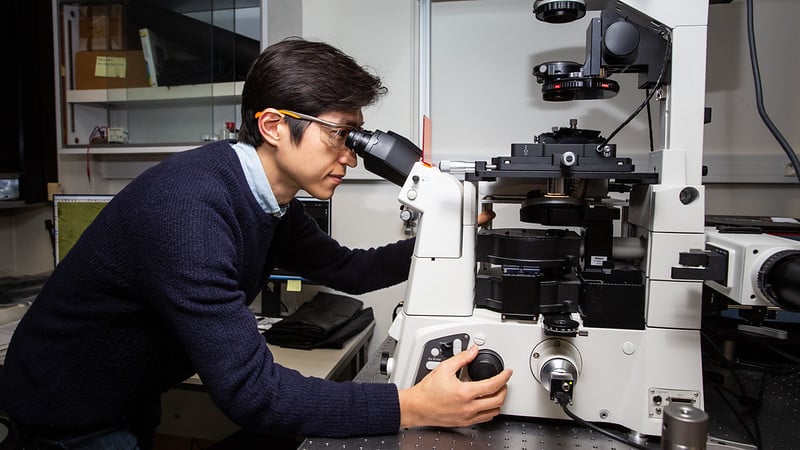
A breakthrough discovery has found a clue in the back of the eye that could be linked to Parkinson’s disease, a condition affecting movement. What’s remarkable is that this clue might show up many years before doctors are able to officially diagnose the disease.
The researchers, who work at Moorfields Eye Hospital and University College London (UCL), have just completed the biggest study of its kind. They looked closely at pictures of the back of the eye, also called the retina, to learn about Parkinson’s disease.
This study drew on information from a large group of people, including 154,830 patients over forty years old and 67,311 volunteers aged forty to sixty-nine, who are part of the UK Biobank project.
Close examination of the brain
After closely examining the brains of people who had Parkinson’s disease after they passed away, scientists discovered something interesting. They found that the inside part of the eye called the inner nuclear layer (INL) was different in those with Parkinson’s disease compared to those who were healthy.
They also saw that the layer of cells near the surface of the retina, known as the ganglion cell-inner plexiform layer (GCIPL), was thinner in people with the disease.
This is a significant finding because it is the first time that the INL has been connected to the risk of developing Parkinson’s disease.
It is also the first time that changes in the eye could be seen many years before doctors can diagnose someone with Parkinson’s disease. This is about seven years before an official diagnosis is possible.
Eye scans have proven useful in spotting signs of various brain-related conditions such as Alzheimer’s disease, multiple sclerosis, and schizophrenia. The lead author Dr. Siegfried Wagner (UCL Institute of Ophthalmology and Moorfields Eye Hospital) said, “I continue to be amazed by what we can discover through eye scans.”
He further added, “Finding signs of a number of diseases before symptoms emerge means that, in the future, people could have the time to make lifestyle changes to prevent some conditions [from] arising, and clinicians could delay the onset and impact of life-changing neurodegenerative disorders.”
Artificial intelligence to analyze eye scans
In recent times, researchers have also explored the use of advanced computer technology, known as artificial intelligence, to help analyze eye scans. This technology has shown promise in predicting the risk of stroke and heart disease through these scans.
Cutting-edge technology, called high-resolution, 3D Optical Coherence Tomography (OCT) scans, provide us with an amazingly clear look at the retina. These scans are special because they allow doctors to see deep layers of cells under the skin without the need for invasive procedures.
By using a smart type of computer learning called AI machine learning, these images can be checked quite quickly to detect all sorts of signals pertaining to a person’s health.
Google AI is developing an AI-powered eye scan that can predict cardiovascular events. This could lead to earlier diagnosis and treatment of medical conditions.#google #ai #healthcare #medical #doctors pic.twitter.com/1baMDMV5pC
— Programmers Globe (@ProgGlobe) June 22, 2023
The growing area of “oculomics” is becoming all the more important for figuring out early signs of diseases that make our bodies break down over time.
Alastair Denniston, a professor and consultant ophthalmologist at University Hospitals Birmingham, said, “This work demonstrates the potential for eye data, harnessed by the technology to pick up signs and changes too subtle for humans to see.”
He further said, “We can now detect very early signs of Parkinson’s, opening up new possibilities for treatment.”
This helps us in determining risks before they become bigger problems. With such knowledge, people can make the necessary lifestyle changes, and they can also attempt to to stop the problems from becoming worse.
More research to understand the process
More research is required to understand how the thinner ganglion cell-inner plexiform layer (GCIPL) and the inner nuclear layer (INL) affect each other and whether changes in one lead to problems in the other.
Dr. Wagner mentioned, “While we are not yet ready to predict whether an individual will develop Parkinson’s, we hope that this method could soon become a pre-screening tool for people at risk of disease.”
See all the latest news from Greece and the world at Greekreporter.com. Contact our newsroom to report an update or send your story, photos and videos. Follow GR on Google News and subscribe here to our daily email!



